
Composed in 1796 for Anton Weidinger, Haydn’s Trumpet Concerto in E-flat major is a cornerstone of trumpet repertoire, showcasing the keyed trumpet’s capabilities and Haydn’s classical genius.
1.1 Historical Context of the Concerto
Haydn’s Trumpet Concerto in E-flat major was composed in 1796 for Anton Weidinger, a virtuoso who pioneered the keyed trumpet. This instrument, capable of playing chromatic notes, inspired Haydn to create a work that celebrated its expanded range. The concerto marked a pivotal moment in trumpet history, showcasing the evolution of trumpet technology and its integration into classical music. As one of Haydn’s most celebrated works, it reflects his mastery of the Classical era and his ability to innovate within traditional forms. Its composition highlights the fusion of artistic vision and technical advancement.
1.2 Significance in Trumpet Repertoire
Haydn’s Trumpet Concerto is a cornerstone of trumpet literature, celebrated for its technical brilliance and musical depth. Composed for the keyed trumpet, it represents a milestone in the instrument’s evolution, showcasing its expanded capabilities. The concerto remains a staple in classical trumpet repertoire, admired for its balance of lyricism and virtuosity. Its enduring popularity lies in its ability to highlight the trumpet’s expressive qualities, making it a favorite among performers and audiences alike. This work solidified Haydn’s legacy as a master of classical concerto composition.
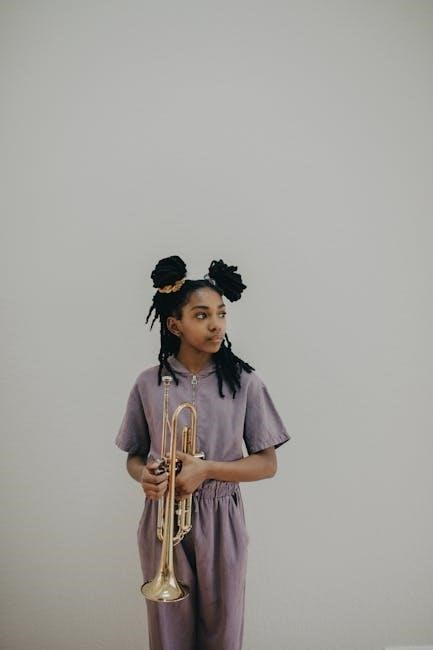
Composition and Structure
Haydn’s Trumpet Concerto is structured as a classical concerto, featuring three movements. It balances formal clarity with innovative techniques, showcasing Haydn’s mastery of orchestration and thematic development.
2.1 The Three Movements of the Concerto
Haydn’s Trumpet Concerto is divided into three distinct movements, each showcasing the instrument’s capabilities. The first movement, marked Allegro, is lively and thematic, establishing the concerto’s energetic tone. The second movement, Andante, offers a lyrical and expressive contrast, highlighting the trumpet’s melodic potential. The final movement, another Allegro, often features a rondo-like structure, providing a vibrant and playful conclusion. This tripartite structure ensures a balanced and cohesive musical experience, blending Haydn’s classical form with innovative brilliance.
2.2 Key and Instrumentation
Haydn’s Trumpet Concerto is scored in the key of E-flat major, a choice that highlights the trumpet’s bright, majestic tone. The instrumentation includes a solo trumpet, an orchestra with strings, woodwinds (flutes, oboes, clarinets, bassoons), brass (horns, trumpets), and timpani. This rich orchestration creates a balanced dialogue between the soloist and the ensemble, emphasizing both the trumpet’s agility and the orchestra’s harmonic depth. The key of E-flat major also complements the trumpet’s technical capabilities, particularly with the keyed trumpet’s extended range.
2.3 The Role of the Keyed Trumpet
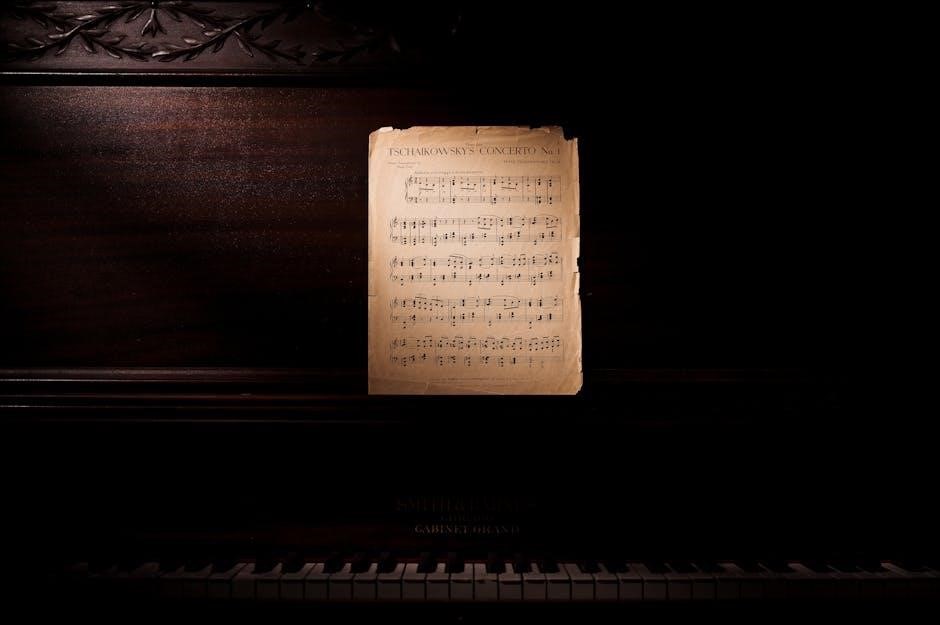
The keyed trumpet, invented by Anton Weidinger, was central to Haydn’s concerto; Its keys allowed for chromatic passages and improved intonation, enabling the trumpet to play melodies with greater agility and expressiveness. Haydn exploited these capabilities, crafting intricate solos that showcased the instrument’s extended range. The keyed trumpet’s design influenced the concerto’s composition, pushing the boundaries of what was possible for the trumpet in classical music. This innovation highlights Haydn’s forward-thinking approach and his collaboration with Weidinger, a pioneer in trumpet technology.
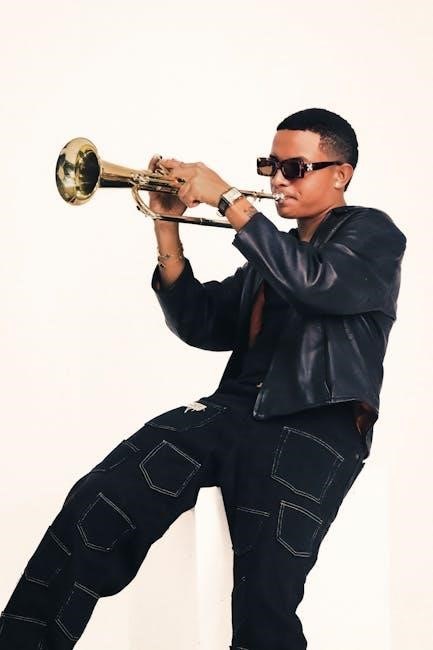
The Trumpet Concerto in E-flat major (Hob.VIIe:1)
Haydn’s Trumpet Concerto in E-flat major, Hob.VIIe:1, is a celebrated masterpiece, showcasing the trumpet’s expressive potential. Composed around 1796, it remains a cornerstone of trumpet repertoire.
3.1 The Premiere and Dedication
Haydn’s Trumpet Concerto in E-flat major, Hob.VIIe:1, was premiered in 1800 in Vienna. It was dedicated to Anton Weidinger, a virtuosic trumpeter known for his innovative keyed trumpet. The concerto was crafted to showcase Weidinger’s technical mastery and expressive abilities, reflecting Haydn’s admiration for his artistry. This dedication underscores the work’s historical significance and its tailored composition for the capabilities of the keyed trumpet, making it a landmark in trumpet literature. The premiere marked a pivotal moment in the concerto’s reception and enduring popularity.
3.2 The Soloist: Anton Weidinger
Anton Weidinger, a renowned Austrian trumpeter, was the soloist for whom Haydn composed the Trumpet Concerto in E-flat major. Known for his virtuosity, Weidinger was a pioneer of the keyed trumpet, an instrument whose capabilities Haydn meticulously explored in the concerto. His technical brilliance and expressive playing style inspired Haydn to craft a work that remains central to the trumpet repertoire. Weidinger’s performances were celebrated for their precision and artistry, solidifying the concerto’s reputation as a showcase for the trumpet’s potential.
3.3 The Evolution of Trumpet Technology
The composition of Haydn’s Trumpet Concerto coincided with significant advancements in trumpet design. The late 18th century saw the transition from natural trumpets, which had limited chromatic capabilities, to keyed trumpets. These innovations allowed for greater agility and pitch accuracy, enabling composers like Haydn to write more complex and expressive music for the instrument. The concerto showcases the potential of the keyed trumpet, reflecting the era’s technological progress and expanding the possibilities for trumpet performance in classical music.
Musical Elements and Analysis
Haydn’s Trumpet Concerto is renowned for its melodic elegance, dynamic contrasts, and harmonic richness. The interplay between the trumpet and orchestra highlights vivid thematic development and technical brilliance, showcasing both lyricism and virtuosity.
4.1 The Exposition and Solo Trumpet Entrance
The exposition of Haydn’s Trumpet Concerto beautifully introduces the main themes, showcasing the orchestra’s harmonic richness. The solo trumpet enters with a dramatic flourish, establishing its prominence. The interplay between the trumpet and orchestra creates a vibrant dialogue, blending melodic simplicity with technical brilliance. This section highlights Haydn’s mastery in balancing orchestral texture and solo virtuosity, setting the foundation for the concerto’s musical journey.
4.2 The Development Section
The development section of Haydn’s Trumpet Concerto expands on the themes introduced in the exposition, exploring new harmonic territories and orchestral textures. The trumpet engages in intricate dialogue with the orchestra, showcasing its technical agility. Haydn’s mastery of thematic development is evident as motifs are fragmented and reharmonized, creating a sense of tension and anticipation. The section builds upon the established key relationships, preparing the listener for the eventual return of the main themes in the recapitulation. This part highlights Haydn’s innovative approach to musical structure and expression.
4.3 The Cadenza and Climax
In Haydn’s Trumpet Concerto, the cadenza serves as a dazzling showcase for the soloist’s technical brilliance and musicality. Typically performed towards the end of the first movement, it bridges the development and recapitulation, offering a moment of virtuosic flair. The cadenza often features intricate passages and trills, highlighting the trumpet’s agility and expressive range. Transitioning seamlessly into the climax, the orchestra rejoins with heightened intensity, reinforcing the thematic material and propelling the movement toward its triumphant conclusion. This section underscores Haydn’s ability to blend soloistic brilliance with orchestral grandeur, creating a memorable musical experience.
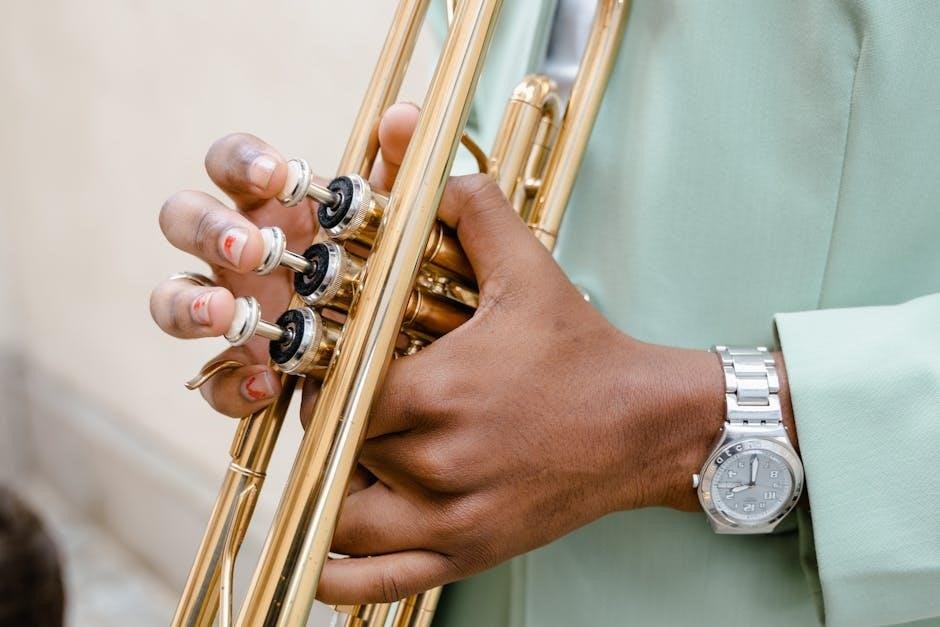
The Score and Sheet Music
Haydn’s Trumpet Concerto PDF scores are widely available, offering access to the full orchestral and solo parts. These scores are essential for study and performance.
5.1 Availability of PDF Scores
PDF scores of Haydn’s Trumpet Concerto are readily available online, offering convenient access for musicians and educators. Many reputable music libraries and websites provide high-quality downloads, often for free or at minimal cost. These scores include the full orchestral version, solo trumpet parts, and piano reductions for practice purposes. Additionally, some editions offer edited versions or arrangements tailored for specific performance needs. The widespread availability of these PDFs has made the concerto more accessible than ever, fostering its study and performance worldwide.
5.2 Edited Versions and Arrangements
Edited versions and arrangements of Haydn’s Trumpet Concerto are widely available, catering to diverse performance needs. These include transcriptions for different instruments, such as piano or brass ensembles, and adaptations for varying skill levels. Some editions feature modernized fingering systems or interpretive markings, while others remain faithful to the original score. Arrangements often simplify complex passages or adjust instrumentation for smaller ensembles. These resources enhance accessibility and flexibility, allowing musicians to explore the concerto in new and innovative ways while preserving its core musical integrity and artistic value.
5.3 Piano Reductions for Practice
Piano reductions of Haydn’s Trumpet Concerto are essential tools for practice, offering a condensed version of the orchestral accompaniment. These reductions retain the harmonic and rhythmic essence of the score, enabling soloists to rehearse effectively without a full orchestra. They are often included in PDF scores or available separately, providing musicians with a practical means to perfect their performance. This format is particularly useful for trumpeters to refine their phrasing, articulation, and technical accuracy before collaborating with an ensemble or orchestra.
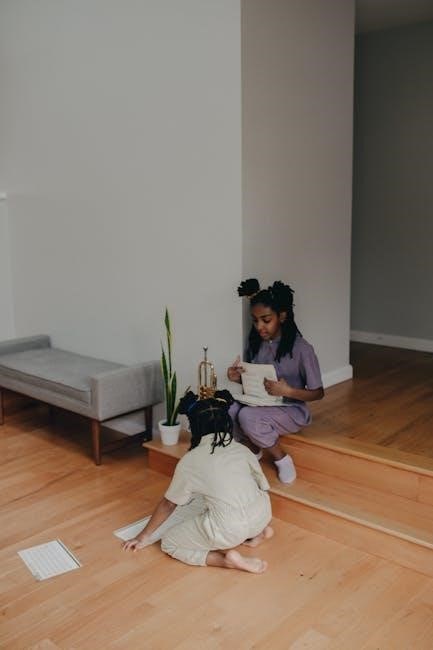
Performance and Interpretation
Performing Haydn’s Trumpet Concerto requires precise technique, expressive phrasing, and a deep understanding of classical style. Interpretation balances brilliance with elegance, showcasing the soloist’s artistry and musicality.
6.1 Famous Performances and Recordings
Haydn’s Trumpet Concerto has been performed by legendary trumpeters like Maurice André, Håkan Hardenberger, and Wynton Marsalis, whose recordings are considered definitive interpretations. André’s rendition, in particular, is celebrated for its technical brilliance and lyrical phrasing, setting a benchmark for future performances. These recordings showcase the concerto’s timeless appeal and have contributed to its widespread popularity. The availability of these performances on platforms like YouTube and Spotify has made them accessible to global audiences, ensuring the concerto’s continued relevance in classical music repertoire.
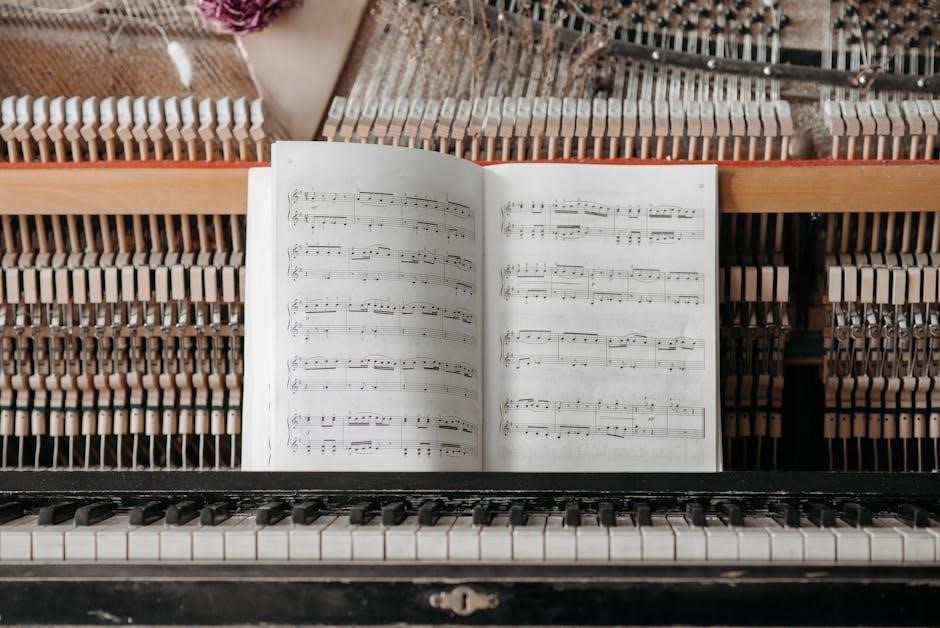
6.2 Challenges for Trumpet Players
Haydn’s Trumpet Concerto presents significant technical challenges, including intricate passages, high tessitura, and precise articulation. The concerto demands exceptional breath control, embouchure stamina, and facility in the upper register. Additionally, the work requires a deep understanding of Classical phrasing and stylistic nuances. Trumpet players must navigate the balance between lyrical playing in the slow movement and virtuosic brilliance in the outer movements. The concerto’s technical and musical demands make it a benchmark for assessing a trumpeter’s mastery, reflecting its central role in the trumpet repertoire.
6.3 Orchestral Accompaniment
The orchestral accompaniment in Haydn’s Trumpet Concerto is meticulously crafted to complement the soloist. A classical orchestra, featuring strings, woodwinds, and brass, provides a balanced and nuanced backdrop. The interplay between the trumpet and orchestra is seamless, with the ensemble offering subtle support while allowing the soloist to shine. Haydn’s orchestration ensures clarity and texture, particularly in moments where the orchestra recoils to highlight the trumpet’s melodic lines. This thoughtful accompaniment enhances the concerto’s musical dialogue, creating a harmonious blend of solo and ensemble elements.
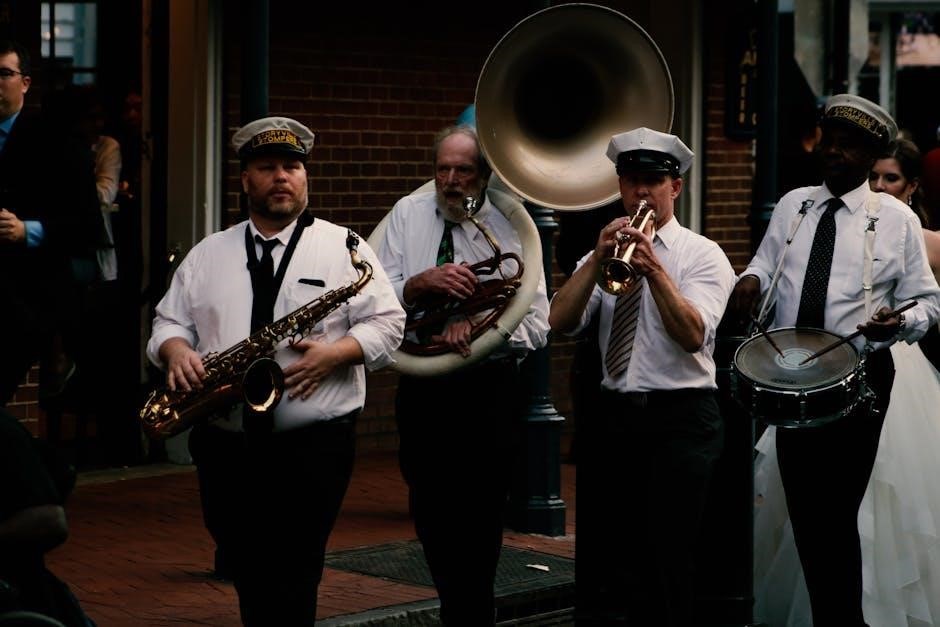
Cultural and Historical Significance
Haydn’s Trumpet Concerto holds a pivotal place in classical music, marking a milestone in the trumpet’s evolution as a solo instrument and influencing future compositions.
7.1 The Concerto’s Role in Classical Music
Haydn’s Trumpet Concerto is a cornerstone of classical music, showcasing the composer’s mastery of balance between form and expression. It exemplifies the Classical era’s emphasis on clarity and precision while introducing innovative uses of the trumpet. The concerto’s structure and melodic richness have made it a benchmark for classical trumpet performance, blending orchestral grandeur with soloistic brilliance. Its enduring appeal lies in its ability to engage both audiences and musicians, solidifying its place as a foundational work in classical repertoire.

7.2 Its Influence on Trumpet Literature
Haydn’s Trumpet Concerto significantly expanded the possibilities for the trumpet as a solo instrument, setting a new standard for classical trumpet literature. It showcased the trumpet’s expressive and technical capabilities, inspiring later composers to write more complex and nuanced works for the instrument. The concerto’s innovative use of the keyed trumpet highlighted its potential, paving the way for future developments in trumpet repertoire. Its influence can be seen in works by composers like Hummel and others who followed in Haydn’s footsteps.
The concerto remains a cornerstone of trumpet literature, shaping the evolution of solo trumpet music and continuing to inspire musicians today.
7.3 Comparisons with Other Haydn Concertos
Haydn’s Trumpet Concerto stands out among his other concertos for its unique blend of virtuosity and melodic charm. Unlike his concertos for strings or piano, the trumpet concerto showcases the instrument’s brilliance and agility. Compared to Haydn’s Horn Concerto, for example, the trumpet concerto exhibits a more vibrant and celebratory character. While his Violin Concertos emphasize lyrical elegance, the trumpet concerto highlights technical prowess and rhythmic energy. This distinction underscores Haydn’s ability to tailor his compositions to the specific qualities of each instrument, making the Trumpet Concerto a landmark in his oeuvre.
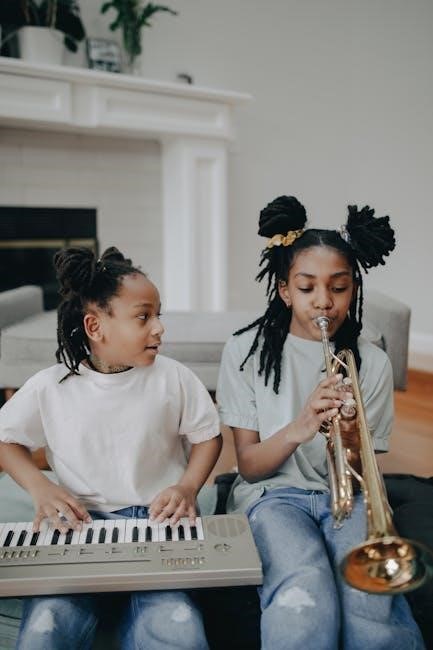
Legacy and Modern Impact
Haydn’s Trumpet Concerto remains a cornerstone of classical music education and performance, celebrated for its technical brilliance and enduring appeal, inspiring generations of musicians and audiences alike.
8.1 The Concerto’s Popularity Today
Haydn’s Trumpet Concerto remains a beloved and widely performed piece in classical music, admired for its lyrical melodies and technical brilliance. Its timeless appeal continues to captivate audiences and musicians alike, making it a staple in orchestral repertoire and solo performances. The concerto’s accessibility and artistic depth ensure its enduring popularity, with frequent performances at concerts and festivals worldwide. Its widespread admiration is further evident in its inclusion in music education programs and its availability as sheet music, including downloadable PDF scores, which enhance its accessibility for modern musicians and enthusiasts.
8.2 Its Use in Education and Pedagogy
Haydn’s Trumpet Concerto is a cornerstone of music education, particularly for trumpet students. Its balanced blend of technical challenges and lyrical passages makes it an ideal piece for developing musicians. Many music schools and conservatories include the concerto in their curriculum, with PDF scores readily available for study and practice. Educators often use it to teach phrasing, articulation, and musical interpretation. The concerto’s structured form also serves as a model for understanding classical composition, making it a valuable tool for both performance and theoretical training.
8.3 Adaptations and Arrangements
Haydn’s Trumpet Concerto has inspired numerous adaptations and arrangements, expanding its reach beyond classical orchestras. Brass ensembles, wind bands, and even chamber groups have reimagined the work, maintaining its original charm while exploring new sonic landscapes. Transcriptions for solo piano or organ highlight the concerto’s melodic richness. Additionally, modern composers have created contemporary interpretations, blending Haydn’s themes with jazz and pop influences. These adaptations ensure the concerto remains relevant, appealing to diverse audiences and inspiring new generations of musicians. PDF scores of these arrangements are widely available, further broadening accessibility.
Haydn’s Trumpet Concerto remains a cornerstone of trumpet repertoire, celebrated for its elegance, brilliance, and historical significance. Its enduring appeal continues to inspire musicians and audiences alike.
9.1 Summary of Key Points
The Haydn Trumpet Concerto PDF is widely available, offering convenient access to this iconic piece. Reputable publishers and libraries provide high-quality scores, ensuring clarity for musicians. The concerto exists in original and transposed versions, catering to different performance needs. PDFs are essential for study, practice, and performance preparation, with many featuring piano reductions for accompaniment. This accessibility has made the concerto a staple in trumpet education and repertoire, preserving its legacy for future generations.
9.2 Final Thoughts on the Concerto’s Importance
Haydn’s Trumpet Concerto remains a cornerstone of classical music, showcasing the composer’s mastery of form and melody. Its significance lies in its technical brilliance and emotional depth, making it a defining work for trumpet soloists. The concerto’s enduring popularity underscores its timeless appeal, inspiring generations of musicians and composers. As a landmark piece, it continues to shape trumpet repertoire, offering both challenge and inspiration to performers. Its legacy is cemented in its ability to elevate the trumpet’s role in orchestral music, ensuring its relevance for years to come.